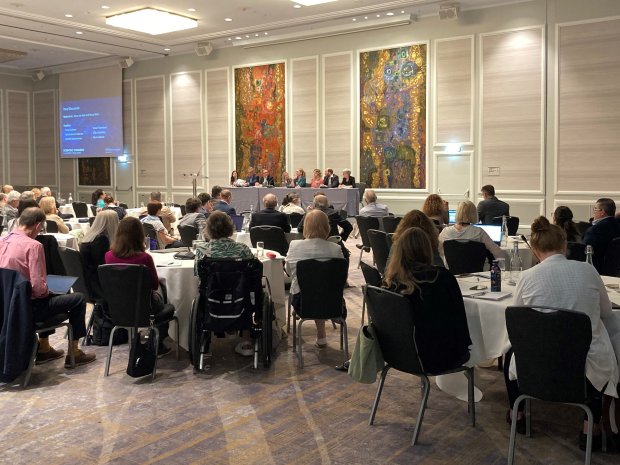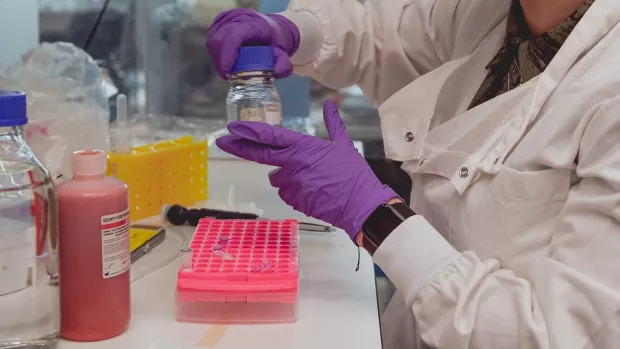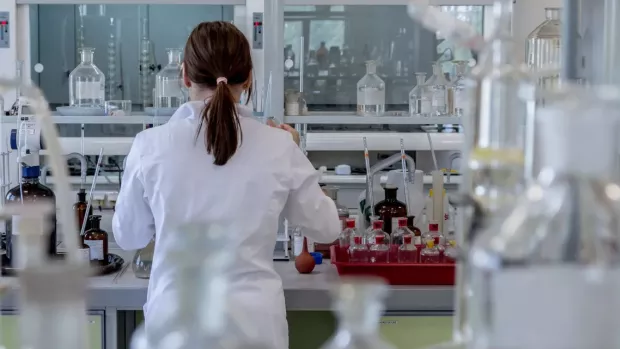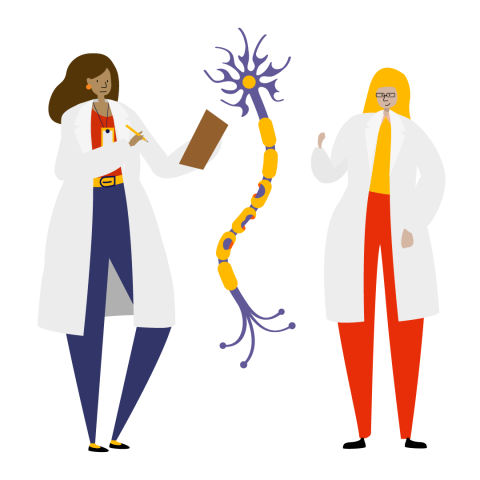
From blood flow to energy power-houses - MS research on a global stage
Over 2,800,000 people live with MS around the world. And vital research is happening in lots of different countries. Our Director of Research and External Affairs, Dr Sarah Rawlings, tells us about some of the latest happenings on the world MS stage
During the COVID-19 pandemic, we saw the difference it made when the global community came together to solve a problem. To stop MS, we need to do just that.
And it’s been a busy month for our international research community, with new discoveries reported and new initiatives launched.
International Progressive MS Alliance Scientific Congress
We’re a founding member of the International Progressive MS Alliance. A key goal of the Alliance is to better understand what drives progression in MS.
A few weeks ago, I attended the Alliance’s Annual Scientific Meeting. During a global webcast on ending MS progression, international MS experts came together to discuss advances and challenges in progressive MS research.
As one speaker, Professor Robert Fox, put it, “We’re still not even sure what’s wrong with the brain that leads to progressive MS. It’s like if your car isn’t working, but you don’t know if it’s an engine problem, the alternator, a battery, or the wheels. If we don’t know where the problem is, it makes it hard to identify solutions to make things better. That’s the origin of our struggles with progressive MS.”
Watch the recording of the global webcast recording on YouTube.
The enormity of this challenge is why 19 MS organisations around the world collaborate through the Alliance. And we are making progress. At the meeting, we heard the results of the Alliance’s Challenge Award projects. And discussed what needs to happen next, to make sure these findings help propel us forwards.
New discoveries
One project was Professor Laura Airas’s, from Finland. She investigated the role of a brain cell called an astrocyte in progression. Astrocytes normally help keep the brain functioning, but can be harmful in MS.
She discovered a particular molecule on the surface of astrocytes might be the culprit. And using a type of imaging, called PET, she could see people with advanced progressive MS had much more of this molecule in their brains.
She’s excited because an existing drug could block this molecule’s activity. So she hopes to do a trial to see if the drug affects progression in people with MS.
Dr Don Mahad, from Edinburgh University, previously discovered that the diabetes drug pioglitazone could protect nerves from damage in mice. Now he’s used tissue from people with progressive MS to test how neurons respond when myelin gets damaged.
Building on previous research, his results showed that mitochondria, the power houses of the cell, are involved in how neurons respond when myelin gets damaged. In the future, these findings could be used to identify new treatment targets to protect nerves from damage.
Professor Ken Smith, from University College London, was exploring whether preventing the brain getting too little oxygen could affect disability. He tested if a drug called nimodipine could help rats with cerebral small vessel disease (cSVD), a condition with many similarities to MS. Nimodipine tells blood vessels to become wider and let more blood with oxygen flow through.
He found increased blood flow and less cognitive decline in rats that received nimodipine. Since MS has many similarities to cSVD, the researchers hope that nimodipine might work similarly in MS.
We’re currently funding Professor Ken Smith, from University College London to explore whether another drug, mannitol, could help nimodipine work even better.
Pathways to Cure Summit
In May, I was at the Pathways to Cures Global Summit hosted by the National MS Society (NMSS) in the US.
NMSS asked over 300 people with MS what an MS ‘cure’ meant to them. For some, it was about stopping their MS from getting worse. For others, it was repairing damage they already have. And others said it was making sure no-one was diagnosed with MS in the future.
All these are part of our vision of a world free from the effects of MS.
Working with others around the world, NMSS have developed a Roadmap that sets out the research needed to help us get us closer to these goals.
Read the Pathways to Cure Roadmap
How we work together
At the summit, alongside nine other MS organisations from across the world, we agreed a new way of working together.
Going forward, we’ll make sure we’re all aware of the research happening in each other’s countries. Like sharing our current research priorities here in the UK
This way, we can quickly identify gaps and jointly create new initiatives to fill them. And make sure the global MS research effort is as efficient and effective as possible.
Finding the answers
It’s been exciting to see the momentum happening in MS research around the world. I know it can feel like progress is slow, but together we’ll find the answers we desperately need, sooner.


